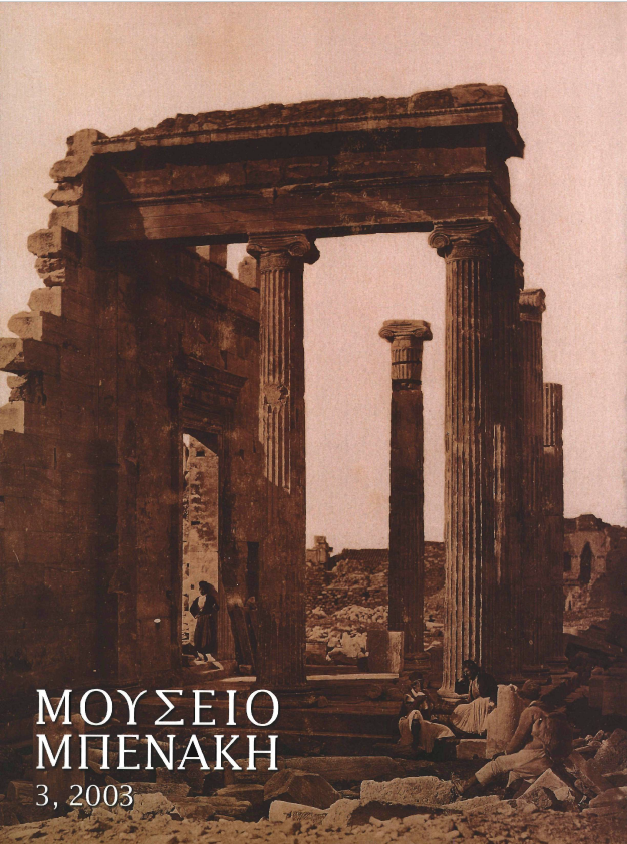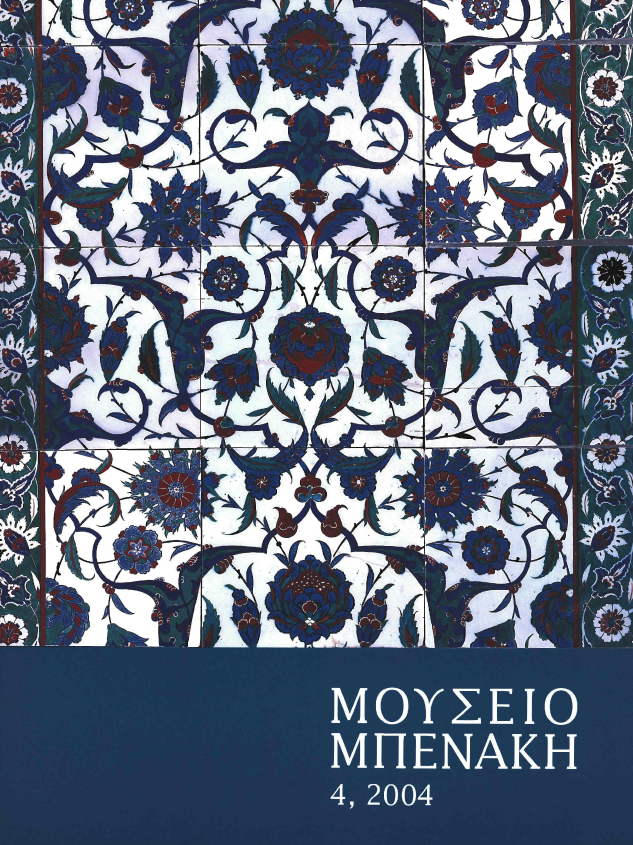The new treasure of Byzantine dishes: technical analysis
Abstract
Five of the nine silver dishes belonging to the unique 12th-century Byzantine treasure on view at the Benaki Museum and recently exhibited in the Museum of Byzantine Culture in Thessaloniki were chosen as the most representative examples for an examination of their composition and of the techniques involved in their manufacture and decoration. The purpose of this study was to correlate the results with a view to classifying them as a single group with common technical features and also, as far as possible, to establish their authenticity, the common provenance of the material and the area of manufacture. The fact that the objects belong to a private collection limited the methods available for examining the dishes to those which could cause no damage. The study demonstrated that the other four dishes bear similar characteristics in their manufacture and can be included in the same group of objects as those analysed. All the dishes were made by hammering on the exterior and the interior. Special attention was given to form their shape and raise their side. Both procedures involved a combination of cold hammering and successive annealing cycles. It should be noted that the second process of shaping was produced on a lathe. The rottating wheel was also used to finish the surface of the dishes and to define the chosen motifs and iconography. Dish no. 5 and footed plate no. 1 seem to differ from the rest in the techniques of ornamentation but only to a limited degree. All other features of their manufacture, and in particular the details of their metal composition, conform to the remaining dishes of the group. The chemical analysis revealed an alloy with a high silver content. The amount of copper is relatively small but sufficient to confirm its deliberate incorporation in the silver to increase its strength and improve its working properties. Gold in particular, but also other elements identified in the silver and their respective quantities were able not only to confirm the dishes' authenticity, but also to classify them as belonging to a single group from one batch of metal (except probably for no. 5 with its higher lead content). The most probable geological source is silver-bearing ores rich in lead. The jarosite follows with some reservations. The extraction of the silver which was present as an impurity in the silver-bearing ore was made by melting and cupelation. Gold and lead which were identified as secondary elements were present with it at all stages of its extraction from the ore and during the clearing process but in a different quantity. The above data could indicate a primary source of the two basic metals which compose the alloy or a primary manufacture, but this is not certain and the possibility of the use of a secondary product, recycled or bought on the market, cannot be ruled out. Examining the dishes by other methods such as neutron activation or lead isotopes, which might identify further trace elements and give more accurate information about the silver mines, was not possible as they would have required the extraction of a sample. Perhaps at some point in the future these methods will be applied and as a result some of the technical features and data of the chemical analysis may be confirmed or expanded.
Article Details
- How to Cite
-
Κοτζαμάνη Δ. (2018). The new treasure of Byzantine dishes: technical analysis. Mouseio Benaki Journal, 3, 81–92. https://doi.org/10.12681/benaki.18213
- Issue
- Vol. 3 (2003)
- Section
- Articles

This work is licensed under a Creative Commons Attribution-NonCommercial-ShareAlike 4.0 International License.
The copyright for articles published in Mouseio Benaki is retained by the author(s), with first publication rights granted to the journal. By virtue of their appearance in this open access journal, articles may be used freely for non-commercial uses, with the exception of the non-granted right to make derivative works, with proper reference to the author(s) and its first publication. The Benaki Museum retains the right to publish, reproduce, publicly display, distribute, and use articles published in Mouseio Benaki in any and all formats and media, either separately or as part of collective works, worldwide and for the full term of copyright. This includes, but is not limited to, the right to publish articles in an issue of Mouseio Benaki, copy and distribute individual reprints of the articles, authorize reproduction of articles in their entirety in another publication of the Benaki Museum, as well as authorize reproduction and distribution of articles or abstracts thereof by means of computerized retrieval systems.



